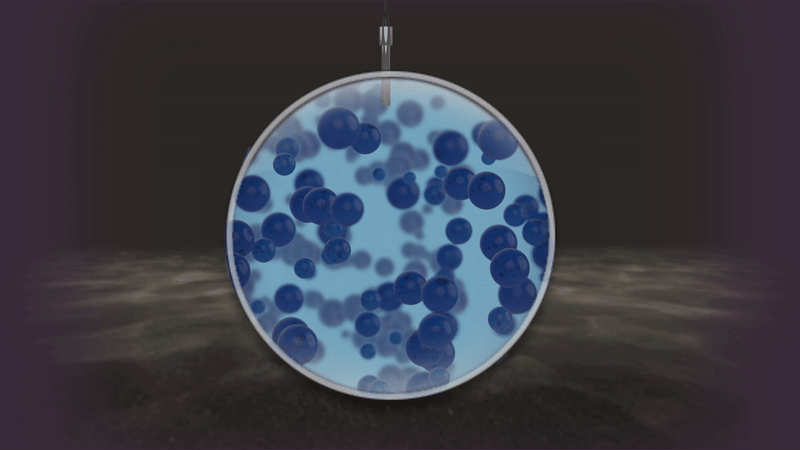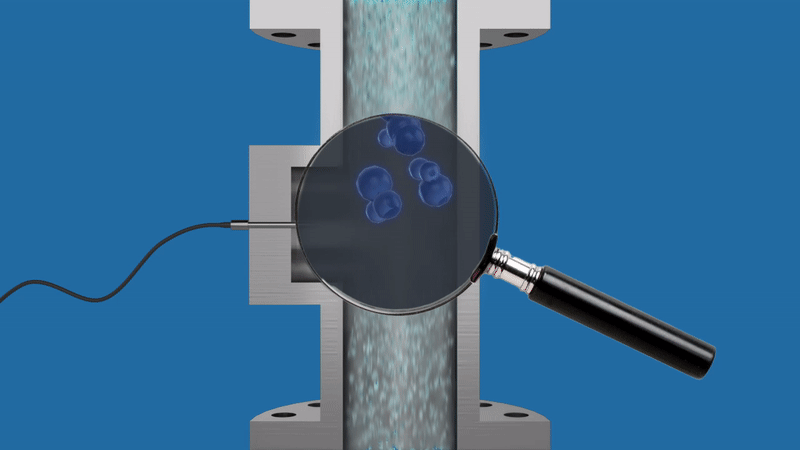
OLPAS Technology
An innovative ultrasound measurement technology, originally developed at the Belgian nuclear research center SCK CEN & the MYRRHA project.


Olpas measurement system
The OLPAS measurement technique is based on the analysis of ultrasound backscattering signals. An ultrasound transducer emits a pulse in the liquid with a wavelength larger than the majority of the particles present. Therefore, the ultrasound wave is not reflected but scattered by the solids present. A part of this scattering return back to the transducer and the subsequent echo is recorded. The intensity and time-evolution of this echo is a direct measurement of the suspended solids in the liquid.
Developed at SCK CEN & MYRRHA the OLPAS Technology provides a direct suspended solids measurement for accurate process control. We measure TSS, MLSS, polymer concentration, sediment load, conductivity or viscosity in challenging conditions.
Olpas devices

Olpas transducer and data-processor
The Olpas measurement system relies on robust ultrasound transducers in combination with high-fidelity data capturing electronics. The Olpas dataprocessor (see figure) allows for online measurements and provides analog and digital outputs to PLC or central control systems. The dataprocessor evaluates more than 300 pulse-echo signals per minute using a predefined or user supplied calibration. By doing so, sufficient data is available for a reliable and constant measurement output. Measurement output is instantaneous and compatible with most industry standard control systems.
The ultrasound transducer is the active element submerged in the liquid suspension. It is sensitive to the concentration of suspended solids approx. 2 to 5 cm in front of top surface. The metal stainless steel housing allows for various clamping or swaging connections and protects the transducer internals from abrasion or external influences.
Mounting
Olpas sensors can be mounted in any direction using any type of process connection due to their small size and stainless steel housing. The sensor is sensitive to all types of solid particles independent of density or size, from fine nanometer-sized particles in nanofluids up to millimeters. Organic or inorganic particles, polymers or slurries: the OLPAS analysis of ultrasound backscattering signals is inherently robust and reliable to determine the solids concentration.
Pool and inline measurements are both feasible with the majority of mounting solutions or process connections directly compatible with our sensors. The ultrasound signal is measured locally, allowing mounting of the sensor in small and large pipes without interference from surrounding materials.


Olpas Tentacle
The Olpas Tentacle is a very robust sensor optimised for remote monitoring. It has a standard modbus output and can be connected to a communication device for easy data collection.
Advantages of the
OLPAS Measurement Technology
Innovative Technology
Due to the nature of the OLPAS technology using ultrasound backscattering, an intrinsic measurement of the solids concentration is obtained. The ultrasound pulse propagates in the fluid and the resulting backscattering echo is a representative fingerprint of the suspension concentration.
Ultrasound backscattering is independent of optical parameters, flow conditions, temperature or colour of the medium.
Easy to install
A low power, intrinsically safe, ultrasound pulse is sent into the medium. The backscattered echo is recorded by the transducer itself, allowing easy mounting of the transducers in any situation.
The transducer is no bigger than a pen.
Long maintenance window
Due to the ultrasound pulse used in Olpas measurements, fouling resistance of the Olpas sensors is far superior to competing technologies. So no 'wipers', 'pressured air' or other automated physical cleaning instruments are needed.
In general no re-calibration of the sensor is needed. Ever.
Economic solution
Olpas sensors are both CapEX and OpEx friendly. Buying or renting a sensor is in general cheaper compared to alternatives. Easy installation and long maintenance intervals guarantee a lower OpEx.
We love working together with our partners to co-develop even better economic solutions for their specific needs.
